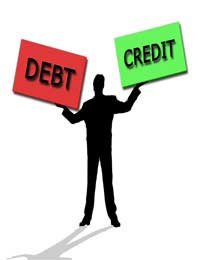Debt Relief Orders: Helping to Reduce Bankruptcies?

For people unemployed and unable to repay their debts, bankruptcy is the only course of action left available to them. However for many people, the costs associated with petitioning for bankruptcy are too high for them to pay.
For example, if you wish to file for Bankruptcy you will have to pay a court fee of £150 (although if you are currently receiving benefits this could be reduced), as well as administration costs of around £450.
For those in genuine poverty however, alternative help is at hand. Back in 2009, the Government introduced a new insolvency scheme known as a Debt Relief Order (DRO), aimed primarily at those people at the lower end of the bankruptcy spectrum.
How Debt Relief Orders Work
Just as with formal bankruptcy notices and Individual Voluntary Arrangements (IVAs), you must declare yourself as officially insolvent – unable to repay your debts – in order to be deemed suitable for a DRO.A DRO will cost the applicant £90 which can be payable in six, monthly instalments. The applicant has to meet certain criteria:
- Must have debts of £15,000 or less
- Cannot be a homeowner
- Must be on a low income
- Should not have assets amounting more than £300
- Should not own a car worth more than £1000
Who Will Benefit from Debt Relief Orders?
With such a stringent selection criteria, it is clear that DROs are aimed only at the poorest and most vulnerable people in society, who are often preyed upon by unscrupulous creditors and loan sharks.As a result, it doesn’t seem likely that DROs will greatly reduce the numbers of bankruptcies that occur each year. Even so, they are definitely offer a glimmer of hope for those people in extreme poverty with no other options or ways to repay their debts.
Just as with a bankruptcy or an IVA, once you are under the protection of a DRO, Creditors must no longer harass you for payment.
Also similar to those insolvency measures, you should be free from your debts after a twelve month period, with the help of an Official Receiver.
Despite it being relatively cheap to arrange, a DRO is certainly not an ‘easy option’. It is no less punitive as an IVA or bankruptcy order. The strict criteria means that the option will only be available to those people already in poverty. The Debt Relief Order is still publicly listed, and officially recorded for at least six years, so it carries the same stigma as a regular bankruptcy notice.
The Benefits of Obtaining Official Advice
Furthermore, a DRO application can only be obtained after the applicant has received official debt management counselling. This is markedly different from the arrangement of a bankruptcy petition or an IVA, both of which can be petitioned for in court, without any legal or financial advice beforehand. The advice could come from the Citizens Advice Bureau or an official debt management organisation, which will make the application on your behalf.Debt Relief Orders are a welcome addition to other insolvency measures already available to people who are struggling to repay their creditors. Although it is unlikely that large numbers of people will benefit from them, they are expected to perform a vital service for those people who continue to exist on the poverty line and are especially vulnerable during an economic downturn.
- A Summary of the Impacts of Bankruptcy
- Bankrupt But Due to Inherit: Who Owns the Property?
- Bankruptcy for Company Directors
- Life as a Discharged Bankrupt
- Guide to Bankruptcy: Bank Accounts
- More Than 10,000 Britons Declared Bankrupt Every Month
- Getting a Mortgage After Bankruptcy
- Take Our Bankruptcy Questionnaire
- Your Bankruptcy Questions Answered
- Ten Important Facts About Bankruptcy
- Getting Help When in Financial Difficulties
- Bought or Rented Home and Bankruptcy
- Bankruptcy Statistics
- Bankruptcy Top Questions
- Common Bankruptcy Terms Explained
- How the Courts Deal with Bankruptcy


Re: Top Debt Management Techniques
Great information. It is really helpful to me. I have read your article that you have shared on debts. so here You can avail…
Re: Bankrupt But Due to Inherit: Who Owns the Property?
Sharen - Your Question:My husband have gone bankrupt well over a year now we pay a monthly payment…
Re: Bankrupt But Due to Inherit: Who Owns the Property?
My husband have gone bankrupt well over a year now we pay a monthly payment we have payed every…
Re: Advantages of Payment Protection Insurance
Are there any payment protection/credit life insurance programs that offer either a full or partial premium…
Re: Bankruptcy and Your Student Loan
I got my student loan on 1998...I never have the change to used it, I lost my job due to 2 times work related accident..my…
Re: Will a Second Bankruptcy Mean More Penalties?
Could you advise me? My husband is being taken to court as his ex business partner who claims he is owed…
Re: Effects of a Bankruptcy Discharge
can bankrupcy sell my property even if lease has gone below 82 years
Re: Your Bankruptcy Questions Answered
@MEM01 - Please see our partner article: Bankrupt But Due to Inherit: Who Owns the Property? Link here. I hope
Re: Your Bankruptcy Questions Answered
Have been made bankrupt for 5 months due to my ex partner's criminal activities. Suddenly have inherited 1/4 of a property…
Re: More Than 10,000 Britons Declared Bankrupt Every Month
@raj - you can 'disclaim' the gift, but once done, you will be unable to control what happens to…